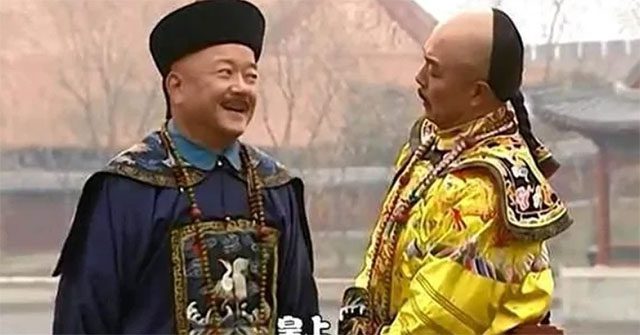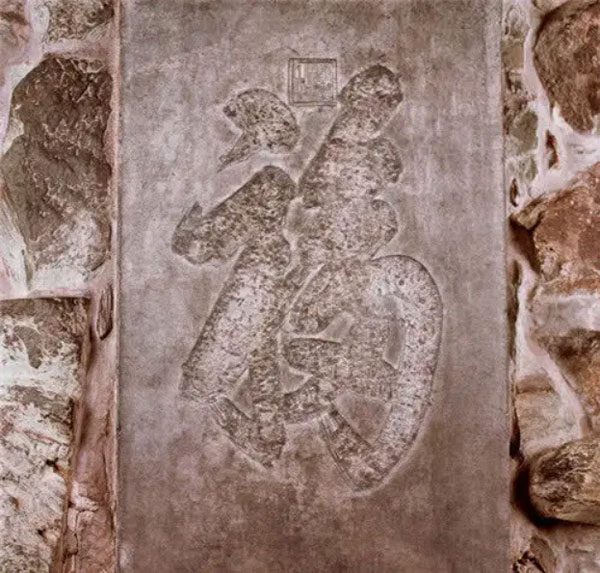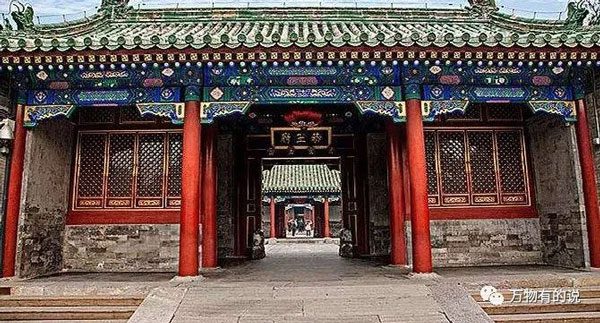He Shen is famously known as a high-ranking official during the Qing Dynasty. While the Qianlong Emperor was alive, He Shen gained the emperor’s trust, allowing him to engage in rampant corruption without fear of opposition. In fact, the emperor even arranged for his daughter to marry He Shen’s son, which illustrates just how favored He Shen was by Qianlong.
However, He Shen’s period of joy was short-lived. When the Jiaqing Emperor ascended the throne, just 15 days after Qianlong’s death, the new emperor established a list of 20 major crimes committed by He Shen. Shortly thereafter, He Shen was found to have committed suicide in his residence.

He Shen, relying on his favor with Qianlong, embezzled a significant amount of money and treasures. (Image: Baidu)
The Jiaqing Emperor immediately ordered a search and confiscation of all belongings in He Shen’s residence. As a result, 800 million taels of silver were discovered, an amount estimated to be 15 times greater than the treasury of the Qing court at that time. In addition to silver, countless jewels and treasures were also found.
The confiscation of He Shen’s assets was a major event at the time. Everything in He Shen’s residence was taken away; however, there was one item that the Jiaqing Emperor did not dare to touch. To this day, this item remains in the Prince Gong Mansion in Beijing. It is known to be a gift from the Kangxi Emperor to Empress Dowager Xiaozhuang. This is a stone tablet inscribed with the character “Fu” (福), written by the Kangxi Emperor himself.
We all know that Kangxi was a master of calligraphy. Once, when Empress Dowager Xiaozhuang fell seriously ill, a fortune teller suggested that Kangxi hold a ritual for blessings. Kangxi followed this advice, fasting for three days and then inscribing the character “Fu.” Later, this character was carved onto a stone tablet. Somehow, Empress Dowager Xiaozhuang truly recovered. The character “Fu” on the stone tablet has since been regarded as “the best in the world.”
This stone tablet inscribed with “Fu” has been considered a treasure of the imperial palace. It remained in the palace for several decades but suddenly disappeared without a trace. It wasn’t until the search of He Shen’s residence that officials discovered this stone tablet. But why was it found in He Shen’s house?

The only stone tablet inscribed with “Fu,” originally a palace treasure, that the Jiaqing Emperor could not reclaim. (Image: Baidu)
The reason is that in the later years of his life, Qianlong, due to his weakened health and difficulty speaking, requested He Shen to attend court and issue imperial edicts on his behalf. He Shen even assisted the emperor in collecting antiques and treasures, which gave him the opportunity to take many valuable items. It is likely that the stone tablet inscribed with “Fu” was secretly taken by He Shen to his residence.
However, when searching He Shen’s residence, the officials could not bring the stone tablet back to the palace. The reason was that He Shen, upon bringing the stone tablet home, had invited a feng shui master to arrange it in his mansion. He placed the stone tablet directly over a cave connected to the dragon vein of the Qing Dynasty and his residence. If the stone tablet were to be excavated, the dragon vein would be disrupted. Therefore, the Jiaqing Emperor had to leave the stone tablet in place to protect the dragon vein of the dynasty.

Today, this stone tablet is still located in the Prince Gong Mansion and is a famous tourist attraction. (Image: Baidu)
Later, He Shen’s residence became part of the estate of Prince Gong, Yi Xin, and is now known as the Prince Gong Mansion. Today, this place has become a famous tourist attraction in Beijing. Many tourists, both domestic and international, visit the stone tablet inscribed with “Fu” to seek blessings for themselves and their families.





















































